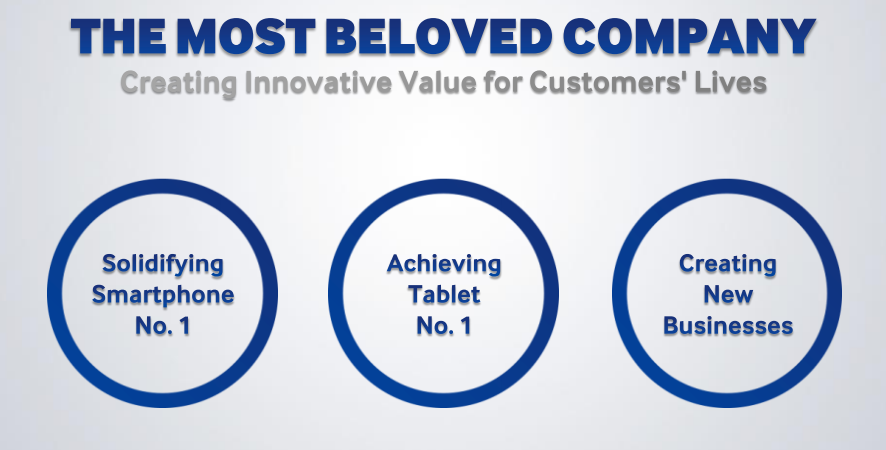
Samsung had a very busy day today as it hosted its shareholders and financial analysts in Seoul for the first Analyst Day of the smartphone era.
The company has been growing like crazy, shipping a total of 100 million Galaxy S and Note devices in 2013, and becoming the top smartphone brand in terms of shipments and revenue in the calendar year. But the stock has been taking a hit, likely because it appears that, like Apple, innovation has slowed and, as the market for high-end smartphones saturate, the average sales price and gross margin for smartphones has declined.
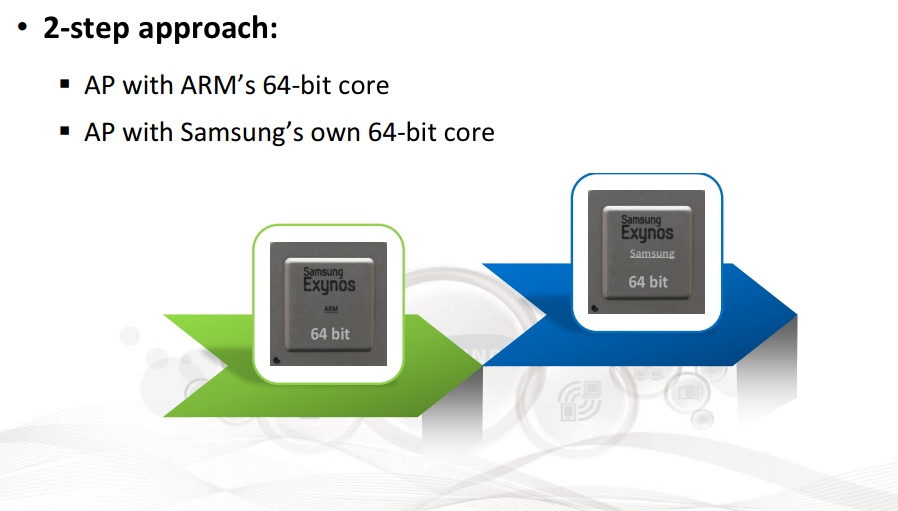
So Samsung put together its top executives to highlight a few key areas of innovation, both in the short- and long-term. The company promises to begin developing its own line of application processors, independent of ARM. That is, they will no longer derive their designs from existing Cortex licenses but, like Apple and Qualcomm, do all the R&D in-house. This has proven to be extremely lucrative for both companies, as they can operate more nimbly and create chips that better suit the hardware and software. And these new chips will definitely be 64-bit.
To date, Samsung’s Exynos chipsets, initially based on ARM’s Cortex-A9 and more recently Cortex-A15, have been extremely powerful, but don’t natively support LTE connectivity, and tend to be extremely power-hungry. Despite Samsung manufacturing their own Exynos chips, yields have been low, and it has fallen to using Qualcomm Snapdragon chips in North America to satisfy carriers and customers. For a time, these ARM-based and Samsung-built chips will exist harmoniously, as Exynos and Qualcomm do today, for Samsung’s smartphone and tablet lineup. It will be interesting to see whether Intel plays a role in this change, too.
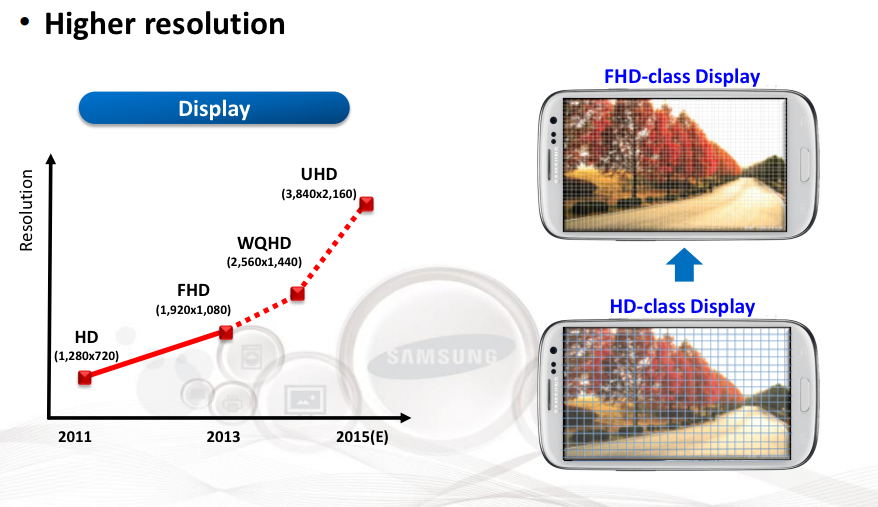
And, as we’ve explained, Samsung is extremely proud of its display heritage, promising bendable and flexible displays in the coming years. But what about traditional panels? The company is working on making 1080p merely common, with 5.25-inch, 560ppi 2560×1440 pixel displays next year. And what about PenTile? No more: these new panels are supposed to use RGB subpixel arrangements, similar to IPS LCD panels from HTC and LG.
Of course, 560ppi is significantly sharper than the human eye can discern, and will likely be unnecessary for handheld devices like smartphones. And though the market said the same thing about 1080p panels during 720’s brief reign, this is really getting out of hand: Samsung promises 4K panels, with a 3840×2160 pixel resolution, in 2015.
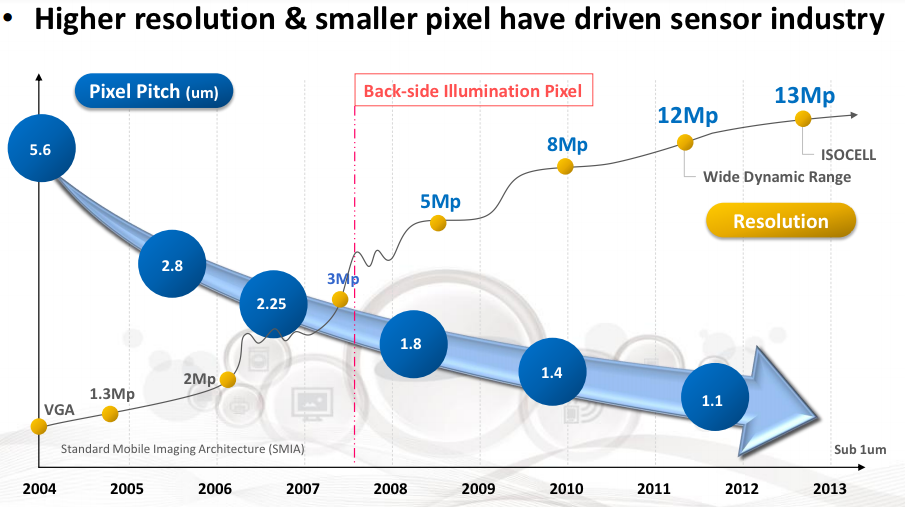
Smartphone cameras are also going to improve next year, if Samsung has anything to say about it. Not only will 16MP sensors become the norm, but the company is promoting its ISOCELL innovation to prevent light loss as the pixels that make up these tiny smartphone camera sensors drop in size.
Finally, Samsung is promising to improve its software. The company knows that its Android adaptation, TouchWIZ, does not match Google’s own design aptitude, and though it has thousands of developers and designers working on improving the situation, it still has a long way to go.
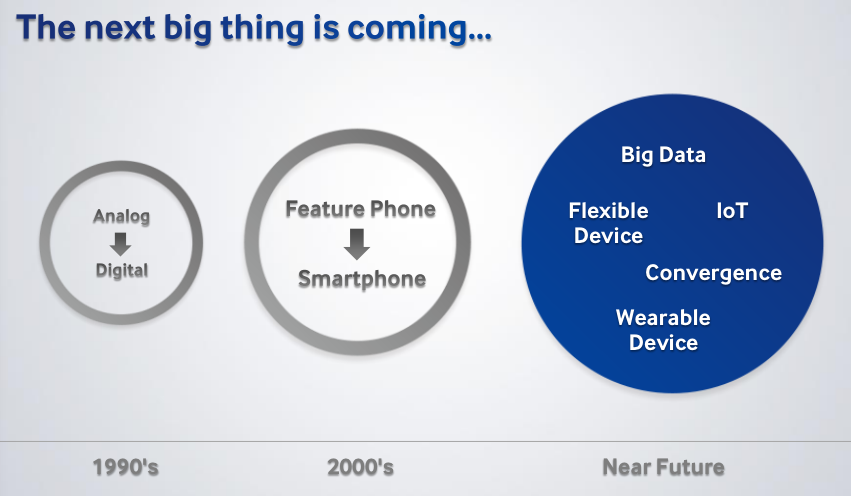
There is the question of where Samsung goes after the smartphone hype has died down. When everyone has a capable computer in their pocket, Samsung hopes that wearable technology, such as the Galaxy Gear, will pick up the revenue and margin slack.
Samsung is morphing into a vertically integrated behemoth, controlling every facet of its design, production and distribution chains. Not only will it continue to provide the manufacturing facilities to companies like Apple, but its screens, cameras, DRAM memory modules and more are among the most widely-used in the world.
We also get a sense of what the next generation of Galaxy devices will look like. The Galaxy S5 may have a 5.25-inch 1440p screen with a 64-bit Samsung-built chip running a variation of ARM’s instruction sets, with a 16MP camera sensor and plenty of power to spare.
[source]Samsung[/source][via]Android Beat[/via]
MobileSyrup may earn a commission from purchases made via our links, which helps fund the journalism we provide free on our website. These links do not influence our editorial content. Support us here.


